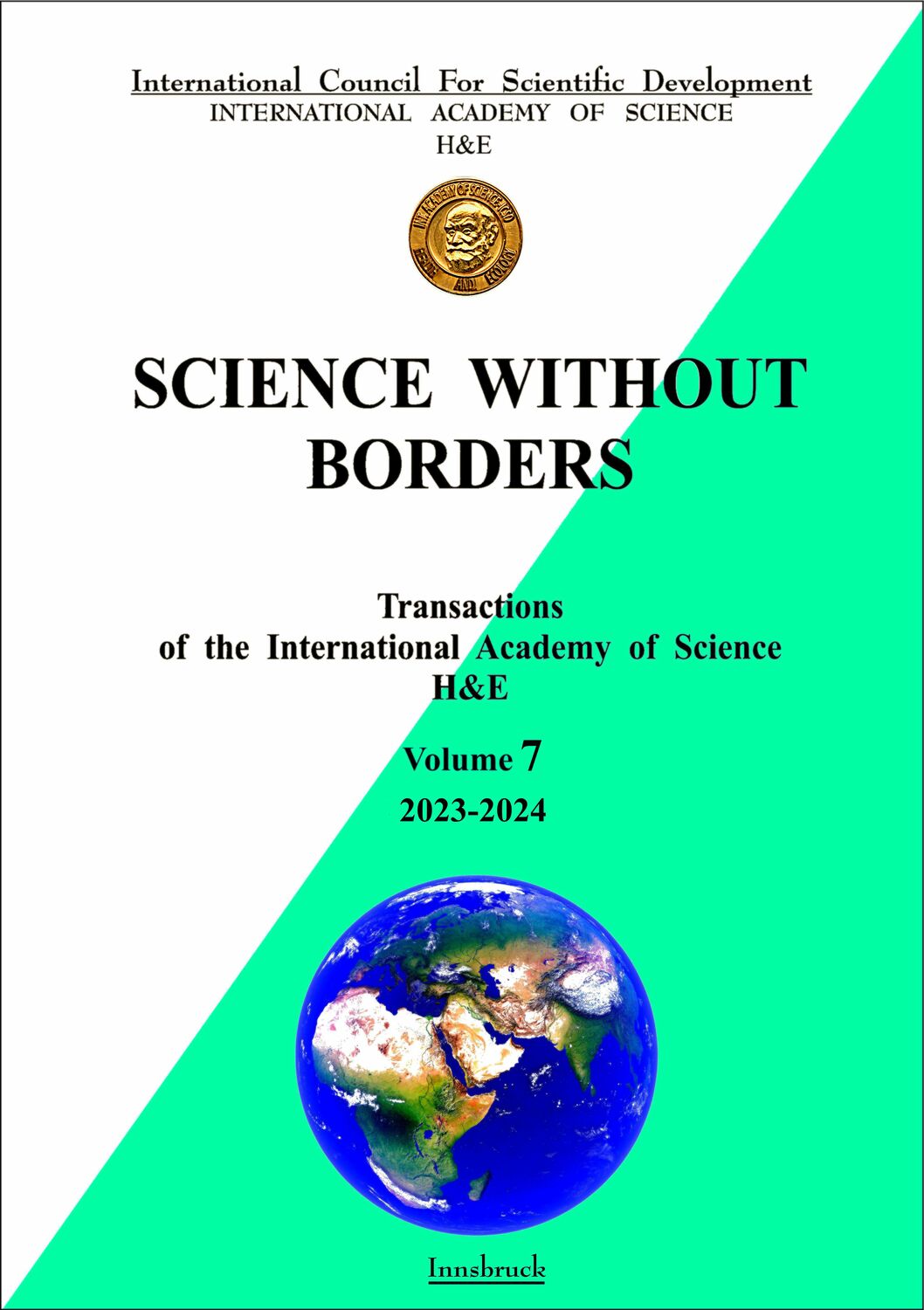
A t te n t i o n!
In 2024 is planned the publishing of the seventh volume of the peer-reviewed book “SCIENCE WITHOUT BORDERS”. Transactions of the International Academy of Science H&E, Volume 7, Innsbruck, SWB, 2023/2024
In the book are provided the following sections:
- Medicine and Biology;
- Physical-Mathematical Sciences;
- Humanities and Economics;
- Earth science, Ecology;
- Architecture and Construction;
- Oil Industry and Chemistry
In the book is planned to publish the transactions of the Academicians of IAS H&E from different countries of the world. The book will be published in 1000 copies and will be sent to all big libraries and scientific centers of the world, and to all full members of ICSD/IAS H&E.
The Presidium of ICSD/IAS H&E asks to produce your article in English for publishing in this book, in accordance with the enclosed instructions. The Academicians of ICSD/IAS H&E can presents the articles of other scientists, who are not the full members of IAS H&E.
The book will be published in Publishing House of ICSD/IAS H&E (SWB, Austria, Innsbruck).
Instructions for Authors
1. The articles will be received till March 30, 2024.
2. The articles must be printed in English, in A-4 format (Word, Times New Roman – 12, 1.5 interval), with capacity up to 15 pages, including pictures, and they must have the electronic version. Right and left fields are 2,5 cm, up and down ones are 3cm. The references must be written in one list at the end of the article. The figures and photos must be included into the article. The initials of authors, name of the organization, the country of the authors and their e-mails must be written under the name of the article.
3. The authors of the article must fulfil the registration form (Appendix 1) and send it with the article to the Editorial board.
4. The registration form and the article must be sent to the Editorial board by e-mail till March 30, 2024 to the address: prof.khalilov@mail.ru
ISSN 2070-0334
ISBN 978-9952-451-08-5
DOI - It will be assigned after publication
The book will be published in paper and electronic formats.
All volumes of the scientific collection of SWB works can be downloaded for free on the website: https://www.wosco.co/publishing-house
Format:
Research Articles are up to 15 pages in length including figures and references. They should include an Abstract and the following sections: Introduction, Results, Discussion, Materials and Methods, References and Notes. Supplementary Material will be permitted but should be limited to information that is not essential to the understanding and evaluation of the research presented in the paper.
Technical terms should be defined. Symbols, abbreviations, and acronyms should be defined the first time they are used. All tables and figures should be cited in numerical order.
Titles should be no more than 96 characters (including spaces).
One-sentence summaries capturing the most important point should be submitted for all papers.
Authors and their affiliated institutions, linked by superscript numbers, should be listed beneath the title on the opening page of the manuscript.
Abstracts explain to the general reader why the research was done and why the results are important. The abstract should present background information to convey the context of the research, give a general idea of the methodology used, describe the results, and draw general conclusions. The Abstract is distinct from the main body of the text, and thus should not be the only source of background information critical to understanding the manuscript. Please do not include citations or undefined abbreviations in the Abstract. The abstract should be 125 words or less.
Introduction: The manuscript should start with a brief introduction describing the paper’s significance. The introduction should provide sufficient background information to make the article intelligible to readers in other disciplines, and sufficient context that the significance of the experimental findings is clear.
Results: The results should describe the experiments performed and the findings observed. The results section should be divided into subheadings to delineate different experimental themes.
Discussion: The discussion describes the conclusions that can be drawn from the results as well as the significance and implications of the research.
Materials and Methods: The materials and methods should provide sufficient detail to allow replication of the results (standard methods may be referenced without a detailed description).
References and notes are numbered in the order in which they are cited, first through the text, and then through the figure and table legends. Each reference should have a unique number; do not combine references or embed references in notes. Do not use op. cit. or ibid.
Acknowledgments, including complete funding information, accession numbers, and any information related to authorship conflict of interest, should be gathered into the last numbered reference.
Tables should be included after the references and should supplement, not duplicate, the text. The first sentence of the table legend should be a brief descriptive title. Every vertical column should have a heading, consisting of a title with the unit of measure in parentheses. Units should not change within a column.
Figurs should be included in the text of the manuscript most closely to the place of description of the figur.
Figurs legends should be placed below the fiпures and their length should not exceed 200 words.
BELOW IS AN EXAMPLE OF THE DESIGN OF AN ARTICLE IN SWB!